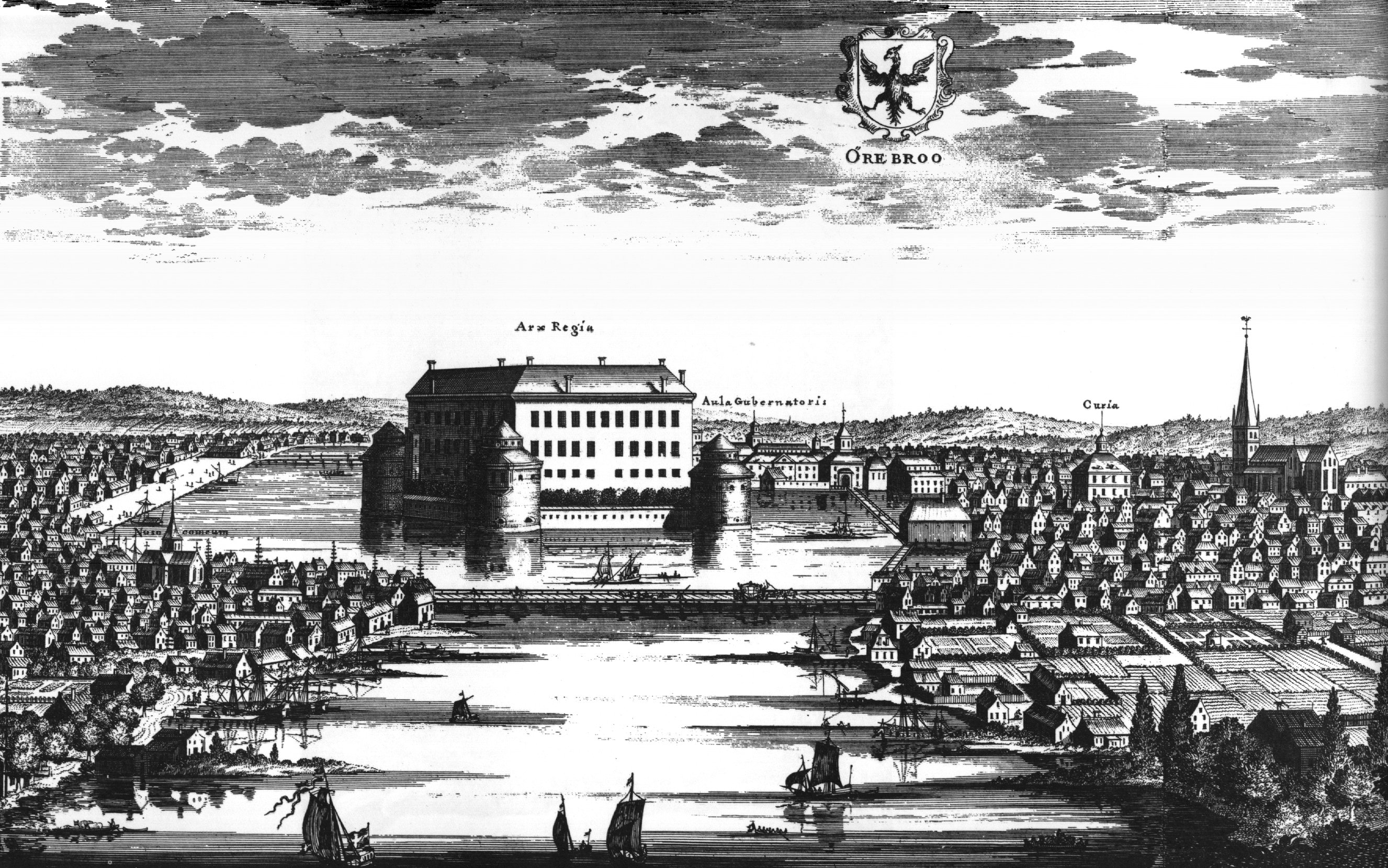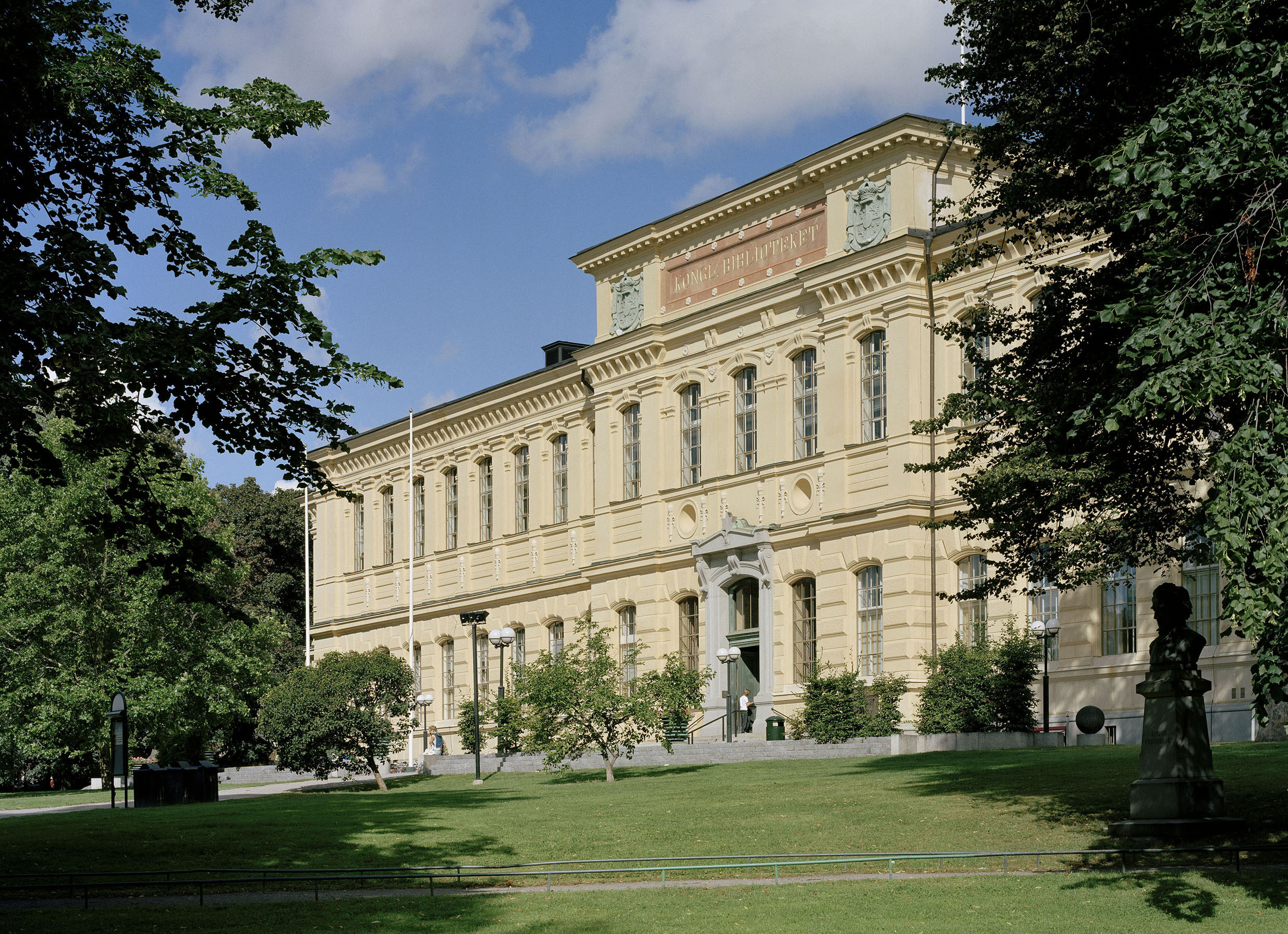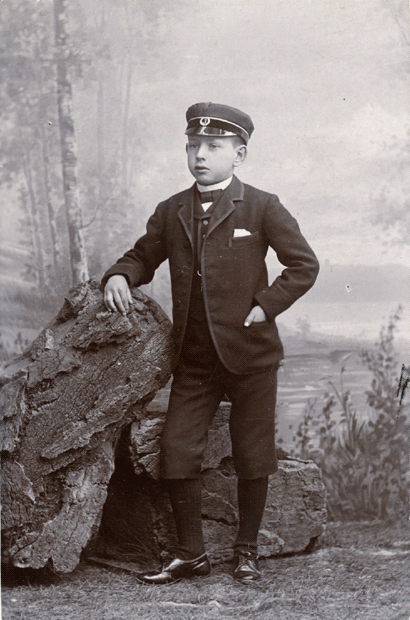|
Charles Lachs
Charles Georg Lachs (1879-1972) was a Bavarian-Swedish visual artist. Specialising in oil and etching, his motifs ranged from landscapes and portraits to humble working class areas around ''fin de siècle'' Stockholm. Biography Charles Lachs was born in 1879 in Örebro to Friedrichs Lachs, and Fredrika (née Lorentzon). He was the brother of Charlotte Lachs, singer, and Alice Brauner. He married Ellen Lindelöw from Ångermanland. Lachs studied at Tekniska skolan (future Konstfack) 1894-1897, and at Konstnärsförbundets målarskola 1900. In addition, he was tutored at the etching school of Axel Tallberg, and made study travels around the United States, and the German Empire. He shared atelier with artists such as Ivar Arosenius, and John Bauer. Lachs is represented inter alia at the National Library of Sweden, and Stockholm City Museum. References * ''Södermalm med omnejd i bilder av Charles Lachs'' (Stockholmia förlag, 2009, ) by Alice Rasmussen *''Svenskt konst ... [...More Info...] [...Related Items...] OR: [Wikipedia] [Google] [Baidu] |
Örebro
Örebro ( , ) is the List of urban areas in Sweden by population, sixth-largest city in Sweden, the seat of Örebro Municipality, and capital of the Örebro County. It is situated by the Närke Plain, near the lake Hjälmaren, a few kilometers inland along the small river Svartån, Närke, Svartån, and has a population of approximately 126,000 in the city proper. It is one of the largest inland hubs of the country, and a major Logistics, logistic and commercial operating site. Örebro is home to Örebro University, a Örebro University Hospital, major university hospital, a Örebro Castle, medieval castle, the water park Gustavsvik as well as several large shopping malls and the Oset-Rynningeviken nature reserve at the lakefront. Örebro is served by Örebro Airport 10 km (6 mi) southwest of the city, and by Örebro Central Station, serviced by the Mälaren Line and Western Main Line. Etymology The name ''Örebro'' refers to a bridge (') crossing the river Svartån, Närke, S ... [...More Info...] [...Related Items...] OR: [Wikipedia] [Google] [Baidu] |
Ångermanland
Ångermanland ( or ) is a historical province (''landskap'') in the northern part of Sweden. It is bordered (clockwise from the north) by Swedish Lapland, Västerbotten, the Gulf of Bothnia, Medelpad and Jämtland. The name is derived from the Old Norse ''anger'', which means "deep fjord" and is a reference to the deep mouth of the Ångerman River (''Ångermanälven''). In earlier times the province was known, in medieval Latin, as Angermannia. Administration The traditional provinces of Sweden, while remaining culturally and historically important, no longer serve as administrative or political entities. The heartlands of Ångermanland lie in today's Västernorrland County, with the remainder of the traditional province now forming part of Västerbotten and Jämtland Counties. Heraldry The heraldic description of the arms of Ångermanland is: ''Azure three Salmons naiant Argent finned Gules, the middle one counternaiant'', which heraldic meaning is that the rivers have spaw ... [...More Info...] [...Related Items...] OR: [Wikipedia] [Google] [Baidu] |
1879 Births
Events January–March * January 1 – The Specie Resumption Act takes effect. The United States Note is valued the same as gold, for the first time since the American Civil War. * January 11 – The Anglo-Zulu War begins. * January 22 – Anglo-Zulu War – Battle of Isandlwana: A force of 1,200 British soldiers is wiped out by over 20,000 Zulu warriors. * January 23 – Anglo-Zulu War – Battle of Rorke's Drift: Following the previous day's defeat, a smaller British force of 140 successfully repels an attack by 4,000 Zulus. * February 3 – Mosley Street in Newcastle upon Tyne (England) becomes the world's first public highway to be lit by the electric incandescent light bulb invented by Joseph Swan. * February 8 – At a meeting of the Royal Canadian Institute, engineer and inventor Sandford Fleming first proposes the global adoption of standard time. * March 3 – United States Geological Survey is founded. * March 11 – Th ... [...More Info...] [...Related Items...] OR: [Wikipedia] [Google] [Baidu] |
Malmö
Malmö (, ; da, Malmø ) is the largest city in the Swedish county (län) of Scania (Skåne). It is the third-largest city in Sweden, after Stockholm and Gothenburg, and the sixth-largest city in the Nordic region, with a municipal population of 350,647 in 2021. The Malmö Metropolitan Region is home to over 700,000 people, and the Øresund Region, which includes Malmö and Copenhagen, is home to 4 million people. Malmö was one of the earliest and most industrialised towns in Scandinavia, but it struggled to adapt to post-industrialism. Since the 2000 completion of the Öresund Bridge, Malmö has undergone a major transformation, producing new architectural developments, supporting new biotech and IT companies, and attracting students through Malmö University and other higher education facilities. Over time, Malmö's demographics have changed and by the turn of the 2020s almost half the municipal population had a foreign background. The city contains many histori ... [...More Info...] [...Related Items...] OR: [Wikipedia] [Google] [Baidu] |
Svenskt Konstnärslexikon
The ''Svenskt konstnärslexikon'' is a dictionary of Swedish art and artists that was published in five volumes by Allhems Förlag AB from 1952 to 1967. LIBRIS. Retrieved 4 November 2016. The dictionary includes over 12,000 biographical entries for Swedish artists with detailed bibliographies for each entry. The editors were , Bror Olsson Bror is a Scandinavian masculine given name which simply means 'brother'. The name has been found as early as in runestones in the form Brodhir. The name form Bror is known since the year 15 ...
[...More Info...] [...Related Items...] OR: [Wikipedia] [Google] [Baidu] |
Alice Rasmussen
Alice Rasmussen (born ''Alice Fallai'' 3 November 1926) is an Italian-Swedish art historian, and author, specialised in art history, botany, and August Strindberg (1849–1912). Alice Rasmussen was born 1926 to Luigi Fallai, and Alice Carlsson. She is great-granddaughter of Friedrichs Lachs, and grand-nephew to Charles Lachs, whose artistry she covered in ''Södermalm med omnejd i bilder av Charles Lachs'' (Stockholmia förlag, 2009). She grew up in Rome, Italy, and in Stockholm, Sweden, and studied the humanities, as well as history of religion at Stockholm University. Bibliography * ''Några synpunkter på Kristusikonografins utveckling fram till och med den ottonska konsten'' (1975) * ''Flora och fauna i Strindbergs skärgårdsskildring under 1870– och 1880-talen'' (1977) * ''Några exempel på ikonografiska parallellföreteelser i samtida religioner vid tiden för kristendomens genombrott'' (1978) * ''Stilar i konsten – Rokoko'' av Flavio Conti (translation by Ali ... [...More Info...] [...Related Items...] OR: [Wikipedia] [Google] [Baidu] |
Stockholm City Museum
The Stockholm City Museum ( sv, Stadsmuseet i Stockholm) is a museum documenting, preserving and exhibiting the history of Stockholm. The museum is housed in Södra Stadshuset at Slussen on Södermalm. The building was completed in 1685. In the 1930s the museum moved in and opened to the public in 1942. The museum is the largest municipal museum in Sweden, and houses collections which include 300,000 items of historical interest; 20,000 works of art and 3 million photographs. The City Museum closed for renovation January 12, 2015 and reopened on April 27, 2019. The museum is governed by the Cultural Affairs and Sports Division of the City of Stockholm. The city museum, the Museum of Medieval Stockholm and Stockholmia Förlag (which publishes books on Stockholm and Stockholm's history) operate as one department within the division. All political decisions are made by the specialist committee for Cultural Affairs. One of the museum's units – Cultural Heritage Department – "Kult ... [...More Info...] [...Related Items...] OR: [Wikipedia] [Google] [Baidu] |
National Library Of Sweden
The National Library of Sweden ( sv, Kungliga biblioteket, ''KB'', meaning "the Royal Library") is Sweden's national library. It collects and preserves all domestic printed and audio-visual materials in Swedish, as well as content with Swedish association published abroad. Being a research library, it also has major collections of literature in other languages. Collections The collections of the National Library consist of more than 18 million objects, including books, posters, pictures, manuscripts, and newspapers. The audio-visual collection consists of more than 10 million hours of recorded material. The National Library is also a humanities research library, with collections of foreign literature in a wide range of subjects. The library holds a collection of 850 broadsides of Sweden dating from 1852. The National Library also purchases literature about Sweden written in foreign languages and works by Swedes published abroad, a category known as suecana. The National Libra ... [...More Info...] [...Related Items...] OR: [Wikipedia] [Google] [Baidu] |
John Bauer (illustrator)
John Albert Bauer (4 June 1882 – 20 November 1918) was a Swedish painter and illustrator. His work is concerned with landscape and mythology, but he also composed portraits. He is best known for his illustrations of early editions of '' Bland tomtar och troll'' (''Among Gnomes and Trolls''), an anthology of Swedish folklore and fairy tales. Bauer was born and raised in Jönköping. At 16 he moved to Stockholm to study at the Royal Swedish Academy of Arts. While there he received his first commissions to illustrate stories in books and magazines, and met the artist Ester Ellqvist, whom he married in 1906. He traveled throughout Lappland, Germany and Italy early in his career, and these cultures deeply informed his work. He painted and illustrated in a romantic nationalistic style, in part influenced by the Italian Renaissance and Sami cultures. Most of his works are watercolors or prints in monochrome or muted colours; he also produced oil paintings and frescos. His illustra ... [...More Info...] [...Related Items...] OR: [Wikipedia] [Google] [Baidu] |
Ivar Arosenius
Ivar Axel Henrik Arosenius (8 October 1878, Gothenburg - 2 January 1909, Älvängen) was a Swedish painter and picture book illustrator. Biography His father Henrik (1841-1901) was a railway engineer and Captain of the Road and Water Engineering Corps. He began by studying for the real estate trade then, in 1895, he received his first artistic training from an amateur watercolorist. The following year, he began formal studies at the Valand Academy, where he became friends with the sculptor, Gerhard Henning. He also took lessons at the School of Design and Crafts, in the department of decorative painting. In 1898, he was admitted to the Royal Swedish Academy of Fine Arts, where he shared a studio with Henning. He was, however, dissatisfied with the teaching methods there and switched to the Konstnärsförbundets skola ('Artists' Association School'), where he studied with Richard Bergh. After a short time there, he found himself dissatisfied again and returned to the Valan ... [...More Info...] [...Related Items...] OR: [Wikipedia] [Google] [Baidu] |
Atelier
An atelier () is the private workshop or studio of a professional artist in the fine or decorative arts or an architect, where a principal master and a number of assistants, students, and apprentices can work together producing fine art or visual art released under the master's name or supervision. Ateliers were the standard vocational practice for European artists from the Middle Ages to the 19th century, and common elsewhere in the world. In medieval Europe this way of working and teaching was often enforced by local guild regulations, such as those of the painters' Guild of Saint Luke, and of other craft guilds. Apprentices usually began working on simple tasks when young, and after some years with increasing knowledge and expertise became journeymen, before possibly becoming masters themselves. This master-apprentice system was gradually replaced as the once powerful guilds declined, and the academy became a favored method of training. However, many professional artists c ... [...More Info...] [...Related Items...] OR: [Wikipedia] [Google] [Baidu] |
German Empire
The German Empire (),Herbert Tuttle wrote in September 1881 that the term "Reich" does not literally connote an empire as has been commonly assumed by English-speaking people. The term literally denotes an empire – particularly a hereditary empire led by an emperor, although has been used in German to denote the Roman Empire because it had a weak hereditary tradition. In the case of the German Empire, the official name was , which is properly translated as "German Empire" because the official position of head of state in the constitution of the German Empire was officially a "presidency" of a confederation of German states led by the King of Prussia who would assume "the title of German Emperor" as referring to the German people, but was not emperor of Germany as in an emperor of a state. –The German Empire" ''Harper's New Monthly Magazine''. vol. 63, issue 376, pp. 591–603; here p. 593. also referred to as Imperial Germany, the Second Reich, as well as simply Germany, ... [...More Info...] [...Related Items...] OR: [Wikipedia] [Google] [Baidu] |







